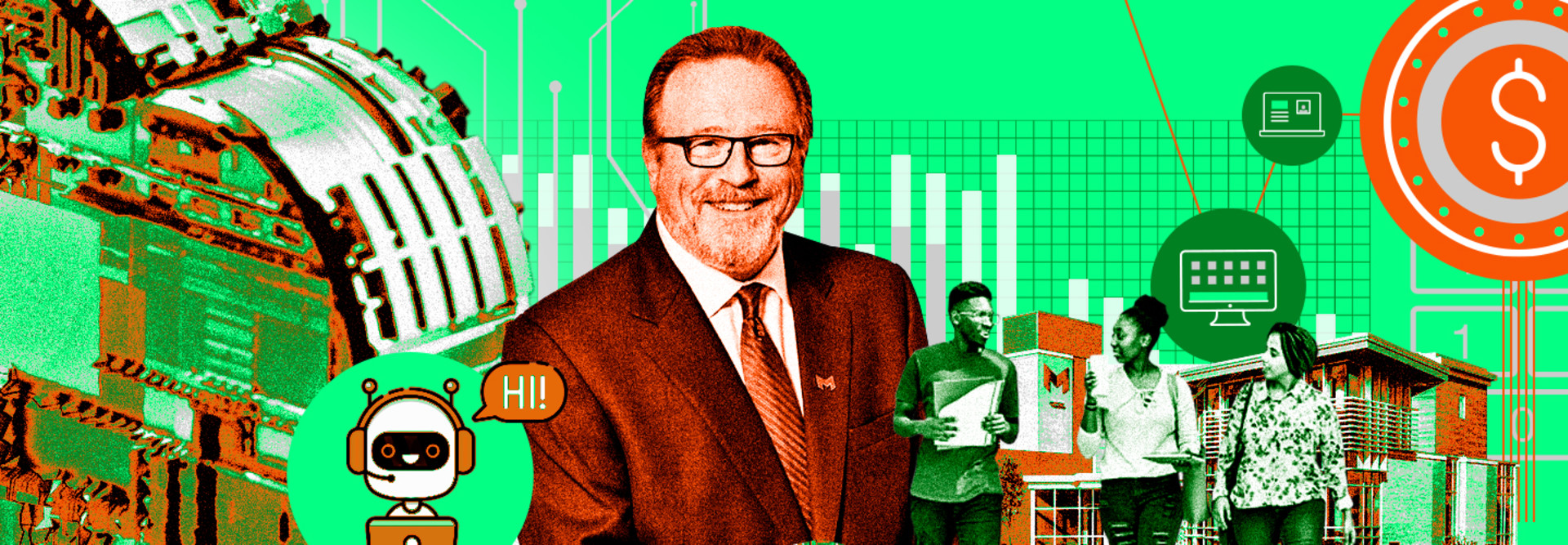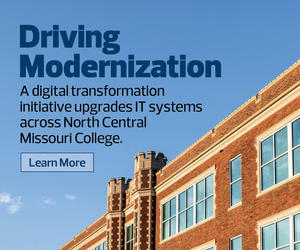The higher education landscape is evolving, and colleges and universities are learning how to evolve with it. As these institutions continue to embark on digital transformation initiatives, their budget needs are changing, and the traditional higher education financial model might not be enough to support them. Investing in new programs, diversifying revenue streams and applying effective asset management have never been more important.
In a Twitter poll posted last November, 40 percent of EdTech: Focus on Higher Education’s readers said funding and budgeting will be their most important focus area for 2022. With declining enrollments, rising costs and shrinking budgets, it is difficult, if not impossible, for the traditional higher education business model to sustain institutions in 2022.
In a Q&A with EdTech, Maryville University President Mark Lombardi discusses how to recognize and disrupt traditional higher education business models.
RELATED: Universities are actively planning for long-term success.
EDTECH: From a high-level perspective, how does the higher ed financial landscape look?
Lombardi: Overall, as an industry, the financial landscape is pretty bad. You have a whole host of universities that are really operating on deficits. They’ve taken “not for profit” to heart far too much. As a result, they’re struggling as enrollments decline.
There are so many challenges to the traditional higher ed business model that it has to be really revolutionized and radically altered. I’d say that higher ed as an industry is in bad financial shape. It demands disruption and change. That’’ one of the things that we’re doing here at Maryville, disrupting that model.
Click the banner below to learn about North Central Missouri College's digital transformation.
EDTECH: What are some problems with the traditional higher ed model?
Lombardi: It’s very labor-intensive, first of all. Second, it’s a scarcity model. It’s based on the notion of restricting access and opportunity to people. The budgets in most universities don’t make any sense. People make a list of all the things that they want, and then they adjust tuition and fees to accommodate that. That’s why the cost of higher education has skyrocketed over the past several decades. It’s really unaffordable for many people.
It’s a business model that’s not predicated on sound principles of fiscal management. It’s not predicated on cost-effective work. It’s not predicated on automation and digitization that can lower costs. It’s a 20th-century business model in a 21st-century world and it doesn’t work anymore.
FIND OUT: How higher ed institutions manage long-term digital transformation projects.
EDTECH: What can be done to revolutionize the model?
Lombardi: Well, first and foremost, we’re in a digital age. COVID-19 has eliminated the debate about what age we’re in. You have to implement strategies that are fundamentally based on data and data analytics. It’s the absolute necessity of all things. You could argue it’s the absolute necessity of the entire economy, in every vertical in the economy.
One of the things we’re doing is employing sophisticated AI techniques to provide service and content to students so that they don’t have to look for it. They’re not hunting for it; it’s pushed out to them. That way, you can significantly reduce your dependency on traditional ways of delivering things and push information, content and services to students in a way that serves their interests most effectively. Like any other service industry, education has to pivot in that direction, and that’s what we’ve been doing very well for the past several years.
Click the banner below for exclusive content about cost containment in higher ed.
EDTECH: How can data analytics improve higher ed’s financial health?
Lombardi: Beth Rudden is a brilliant data scientist from IBM, and she says data is an artifact of the human experience. Students are producing tremendous amounts of data about how they learn, how they want services and how they live, because a university is a comprehensive ecosystem. How do you collect that data? And how do you use that data, not to get money from people the way that predatory companies do, but rather to serve the interests of the students, to provide them the best education, the best learning diagnostics, so that they can anticipate problems?
That data is all out there. What we’ve done is create a data lake where we can take that data and extract it to provide outstanding service across the board. It’s about seeing the way we want to be treated in digital society and then structuring your data around that service dimension.
MORE ON DATA ANALYTICS: Building a solid data house at Georgia State University.
You change the whole learning dimension. So instead of, ‘I’m a student, you’re a teacher, and you’re providing me with content,’ which is kind of antiquated, we are in this journey together. It’s a facilitative journey of learning, where I understand how my brain works and I’m able to then take ownership over that process with the support of life coaches, and faculty and others.
You change the whole dynamic, and it’s empowering. It opens up access and opportunity, particularly for students of color and underrepresented groups who have not had the kind of access and opportunity that they should have.
And then, the economics of that is you greatly reduce the cost of all the things that you had, that were designed to fill gaps that, frankly, no longer exist. For me, data analytics is the Rosetta stone of changing that business model in higher ed and really flipping the script and putting the student in charge of their own learning. And I think that’s exciting.














